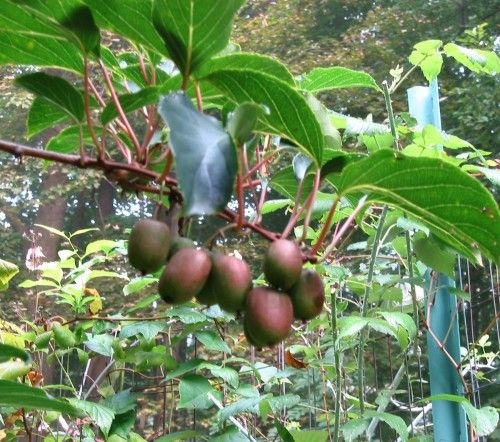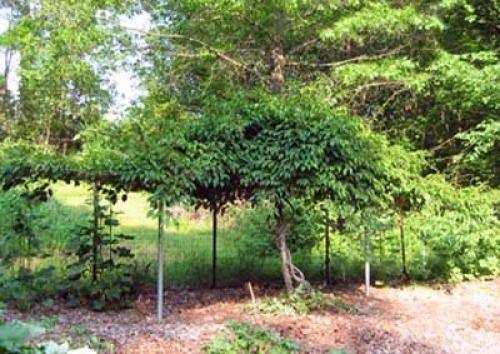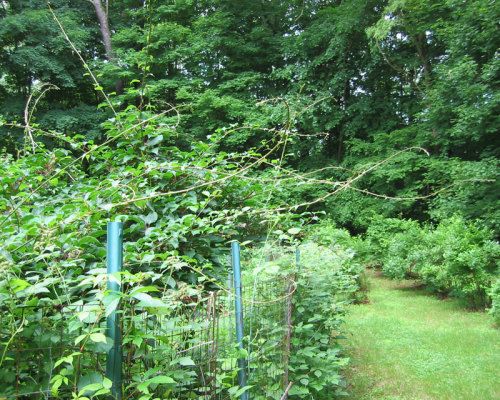
The kiwi (née Chinese gooseberry and renamed by marketers in the 1970s) is a tasty, citrusy flavored fruit fairly bursting with Vitamin C and other nutrients. What’s not to like?
Well, it turns out that the commonly available kiwi (Actinidia deliciosa) isn’t cold hardy and we can’t grow it in Connecticut, but we can grow its little cousin, Northern kiwi, and that’s what I set out to do. And that’s where the saga begins. I purchased a vine that was described as self fruitful, and waited at least 8 years for it to flower. It finally did, but there was no fruit. The following year, same thing. Useless male, I concluded. Big sigh, and back to the drawing board.
I then invested in two plants of a different type of Actinidia arguta, a male (just to be sure) and a female. Last year (its third year), the female flowered, along with the old male, and—miracle of miracles—fruit appeared that fall. It was small, but delicious. This year, the female and the new male flowered (the old male, a bit farther up the hill from the newer plants, got hit by one of our trademark late frosts), and a larger crop has formed.
Hardy kiwis are roughly the size and shape of grape tomatoes, and they form in clusters. Unlike full-sized kiwis, their skin isn’t fuzzy and it doesn’t have to be peeled. I haven’t had enough of a crop yet to look into recipes, so we just eat them out of hand.
Northern kiwis are vines, and they grow aggressively (especially the males). A strong trellis is required. I cobbled together a trellis out of heavy wire, posts for a chain-link fence, with crosspieces made from recycled futon slats I happened to have around. Like many of my other structures, it is functional, if not a work of art.
Pruning is essential, too: initially, to train the plant up and along the trellis, and then throughout the growing season, or the the whole thing will become a tangled, heavy mess. Given the opportunity, Northern kiwis send out long arching shoots around that will twine around anything they touch: fences, neighboring plants, even themselves.. In the spirit of constant vigilance, I keep a pruners in my back pocket, and prune every week or two to keep the plants manageable. When pruning this this plant, you can throw caution to the winds.
Northern kiwis ripen at the very end of the growing season. Even if they are not yet ready to eat, it’s a good idea to pick your kiwis just before a hard frost. You can store them at room temperature or in the fridge, where they will ripen. Check your stash each day for soft fruit, a sign that it’s ready to eat.





















Comments
Log in or create an account to post a comment.
Sign up Log in